The discovery of blackgrass types that were resistant to the main herbicides brought Avadex Factor back into the limelight here in recent years. Based on tri-allate, this is certainly not a new molecule, as it was first launched in Europe in 1961.
Back then, it was a new active for wild old control, but it came as a liquid formulation which had to be incorporated prior to drilling. This meant that it was seldom the product of choice.
However, a new formulation which does not have to be incorporated – Avadex Factor, as distinct from Avadex – arrived in the market in 2017 and grass weed control had moved from primarily post-emergence herbicides to pre-emergence residual actives following the loss of isoproturon.
The fact that it was no longer a specific standalone application increased its appeal and the advent of varying types of herbicide resistance in grassweeds increased its relevance.
Uptake through coleoptile
At a recent information meeting organised by Unichem, Barrie Hunt from Gowan Crop Protection gave a rundown on how and where Avadex Factor works in the plant. It is primarily taken in through the coleoptile of an emerging seedling, with only a little taken in through the roots. The coleoptile is the transparent first leaf which penetrates through the soil to enable emergence.
Susceptible seedlings are generally killed before emergence and further examination will show that affected coleoptiles are swollen on susceptible plants. Such plants will not be killed if the leaf has emerged at the time of application – hence the need for pre-emergence application.
Multisite herbicide
Tri-allate is basically a multisite herbicide which inhibits the production of long-chain fatty acids. It does this by interfering with lipid elongation enzymes in the emerging plant. While it is not fully known where exactly this happens, a side effect of this characteristic is to interfere with wax production on the emerged leaf.
Application and crops
The specific formulation is a capsule suspension carrying 450 g/l of tri-allate. Application rate is 3.6 l/ha to apply 1,620g of active ingredient per hectare. It can be applied to winter wheat, barley and spring barley crops. Wheat needs to be sown at greater than 4cm depth to help avoid damage, but there is no such issue with barley.
Indeed, it can be applied prior to planting spring barley and incorporated by the drilling process or applied just after drilling.
It is considered to be quite sensitive to water volume during application and between 200 l/ha and 300 l/ha is recommended. Barrie said that water rates down to 100 l/ha have been shown to be negative to efficacy.
Target weeds and activity
Avadex Factor is active against many annual grasses and some broadleaved weeds. Its herbicidal activity is a combination of direct and indirect actions on susceptible plants. It should never be used on its own, but Barrie gave figures for what its active contributes to herbicide activity.
Direct action: The species most affected is wild oats, with an average of 85% control if used alone. It can achieve 63% control of Italian ryegrass or sterile brome and 50% control of blackgrass. It also has an effect on some broadleaved weeds, such as cleavers and speedwell, but the effect is somewhat variable.Indirect action: Given how the active works in the plant, it is hardly surprising that it also has an effect on the epicuticular waxes on the leaves of surviving plants. Barrie stated that this is not de-waxing, but rather that the wax coating never actually forms on the leaves of treated susceptible plants such as wild oats, Italian ryegrass, blackgrass, cleavers etc. This helps the uptake of other herbicide actives applied post-emergence and makes Avadex-treated plants easier to kill. This impact on plant wax has been known for many years, but the mechanism has only recently been proven. It is also shown that it does not affect wax on host crops such as wheat or barley. It is not known how long this effect on the wax persists, but this is now being examined.
The active works as a type of heavy vapour which resides in the air spaces in the soil. This means that it does not need to achieve total cover during spray application, hence the coarser droplets with 200+ l/ha of water. Rolling pre application is very beneficial.
Persistence
Given the dryness of seedbeds in the early part of the season, Barrie commented that tri-allate is the most tolerant residual herbicide to dry conditions. More moisture is beneficial, but this characteristic can occasionally be useful.
On the issue of persistence, he said that its herbicidal activity is quite long in comparison to other residual herbicide actives (see Table 1).
The duration of activity means that a 12 month gap is necessary between Avadex Factor application and the sowing of a susceptible crop such as oats and grasses.
This means that one should not sow winter oats following the treatment of a spring barley crop.
Use in programmes
While it does not offer perfect control, Barrie stated that the addition of Avadex Factor to a programme adds 10-18% additional control of blackgrass.
This seems to apply to any other effective chemistry, including some new chemistry.
He also said that it helps to improve control variability, which can be a feature of other products still active against blackgrass.
While it is quite active on its own against wild oats, it is still best used as part of a programme.
This is especially the case with a winter application, where late germination can occur in spring.
Where Italian ryegrass is a problem, the addition of Avadex Factor adds 10-15% additional control of this weed.
It also helps control brome grasses, mainly by helping the other targeted herbicides that will be applied subsequently. But its net benefit is not as great as it is against blackgrass.
While these numbers may appear modest, that additional control still helps greatly in terms of reducing seed production and seed return.
Targeting specific grasses
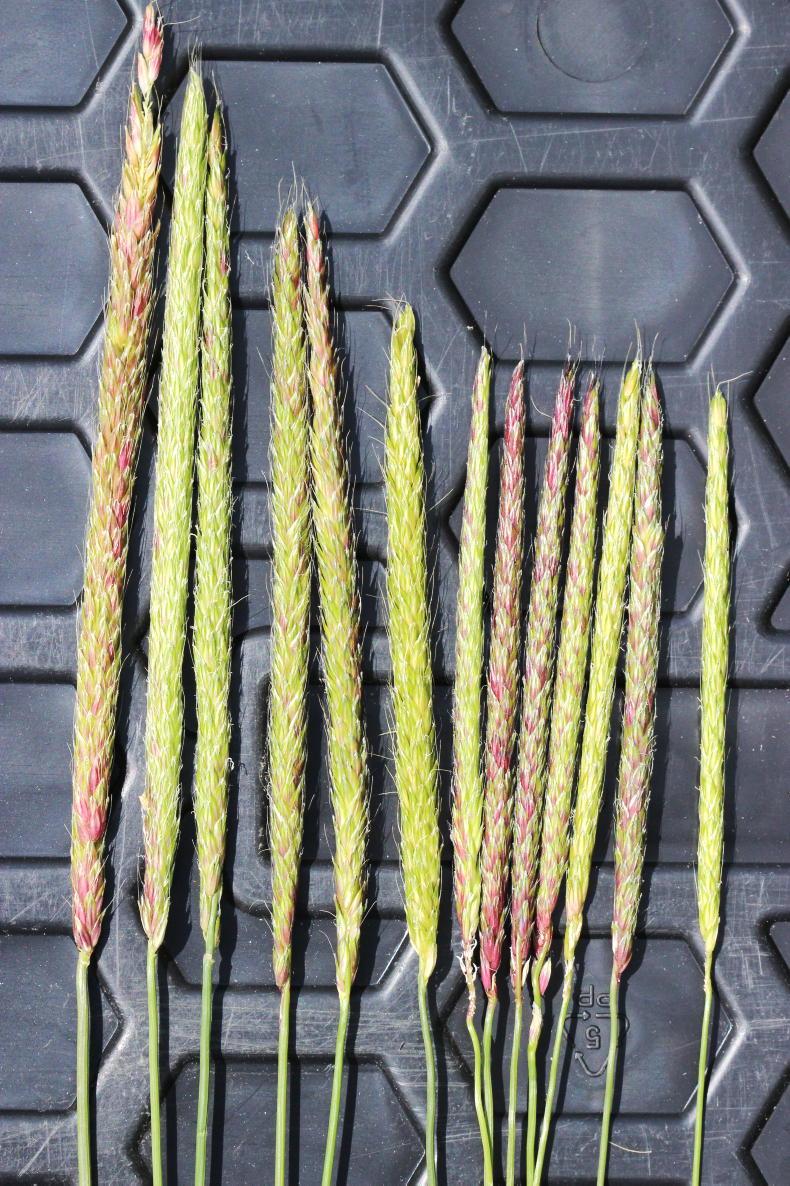
Reducing the number of plants or heads of target weeds like blackgrass will help to reduce weed return.
All efforts to control grass weeds must involve an element of integrated weed management. Barrie emphasised that herbicides alone are not a sustainable long-term option. Control must involve tools like stubble management, mapping infestations, equipment hygiene, rotation, delaying drilling, rotational ploughing and the removal of survivors by rogueing or partial crop destruction.
Blackgrass: Ensure that all weeds present prior to drilling are destroyed, either by cultivation or the use of glyphosate. In fields established by minimum cultivation for years, consider ploughing but do not re-plough for a number of years. Drill the worst-infested fields last.Apply a mixture of Avadex Factor plus flufenacet (240 g/ha) immediately post-drilling. Where a post-emergence herbicide is to be used, apply pendimethalin in the autumn, followed by Alister or Pacifica. In all instances, control of herbicide-susceptible weeds must involve a combination of integrated weed management measures plus herbicide programmes.
Wild oats:Avadex has given good control of this weed for the past 60 years, but it is unlikely to provide full control. Late spring germinating weeds may not be controlled. Also, plants that germinate from deep in the soil may not be controlled if their coleoptiles (the first transparent leaf) do not extend to the soil surface where the chemical is located. Such plants may not be controlled, as the herbicide is primarily taken into the plant through the coleoptile.Avadex is also very effective against tame or volunteer oats and these can be an even bigger problem because of the infestation level.
Bromes: For brome control, Avadex in not very effective on its own and Barrie indicated that ploughing is by far the best option for control. However, ground that is ploughed should be left a few years before ploughing again, to allow the seeds in the ground to die off naturally. Annual ploughing merely brings buried seeds back to the surface where they can establish to prolong the problem.Rotation and delayed planting are also key to solving problems with brome grasses. Ensure that plants which germinated prior to planting are killed prior to drilling.
Other grasses: As well as the main targets, application of Avadex Factor is also likely to help with the control of other grass weeds such as annual meadowgrass and loose silky-bent.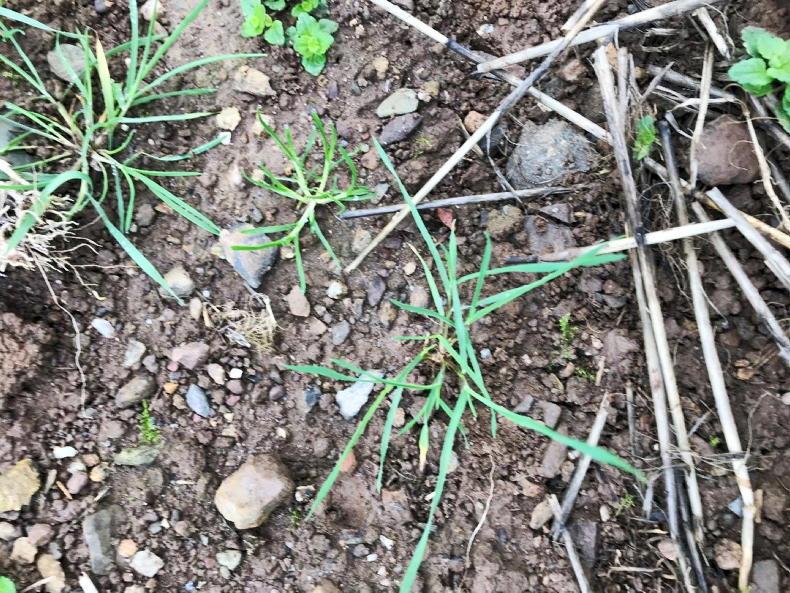
Blackgrass or other weed seedlings on stubbles must be destroyed prior to planting.
Getting the most from Avadex Factor is helped by adhering to basic guidelines.
Good tight seedbeds help control by helping to lock in the active. While it is less sensitive to drier seedbeds, adequate moisture in the seedbed helps activity.
It is very sensitive to application rate, so full rate is needed for winter and spring applications. The full rate of active at 3.6 l/ha applies less tri-allate than was applied in the previous formulation.
It is compatible with a wide range of tank-mix options.
Activity is sensitive to the water rate used, so apply it in a minimum of 200l/ha.
Apply Avadex Factor within 48 hours of drilling.
Ensure that wheat is planted more than 4cm deep and that seeds are covered.
Avadex has given useful control of a range of grass weeds for the past six decades and no resistance has yet been detected.Use of full rate is important for control.It is sensitive to water rate and 200 l/ha is seen as the minimum.It has direct and indirect effects on grasses and broadleaved weeds, some of which act to improve the efficacy of following herbicides. Rolling prior to spraying is generally beneficial.
The discovery of blackgrass types that were resistant to the main herbicides brought Avadex Factor back into the limelight here in recent years. Based on tri-allate, this is certainly not a new molecule, as it was first launched in Europe in 1961.
Back then, it was a new active for wild old control, but it came as a liquid formulation which had to be incorporated prior to drilling. This meant that it was seldom the product of choice.
However, a new formulation which does not have to be incorporated – Avadex Factor, as distinct from Avadex – arrived in the market in 2017 and grass weed control had moved from primarily post-emergence herbicides to pre-emergence residual actives following the loss of isoproturon.
The fact that it was no longer a specific standalone application increased its appeal and the advent of varying types of herbicide resistance in grassweeds increased its relevance.
Uptake through coleoptile
At a recent information meeting organised by Unichem, Barrie Hunt from Gowan Crop Protection gave a rundown on how and where Avadex Factor works in the plant. It is primarily taken in through the coleoptile of an emerging seedling, with only a little taken in through the roots. The coleoptile is the transparent first leaf which penetrates through the soil to enable emergence.
Susceptible seedlings are generally killed before emergence and further examination will show that affected coleoptiles are swollen on susceptible plants. Such plants will not be killed if the leaf has emerged at the time of application – hence the need for pre-emergence application.
Multisite herbicide
Tri-allate is basically a multisite herbicide which inhibits the production of long-chain fatty acids. It does this by interfering with lipid elongation enzymes in the emerging plant. While it is not fully known where exactly this happens, a side effect of this characteristic is to interfere with wax production on the emerged leaf.
Application and crops
The specific formulation is a capsule suspension carrying 450 g/l of tri-allate. Application rate is 3.6 l/ha to apply 1,620g of active ingredient per hectare. It can be applied to winter wheat, barley and spring barley crops. Wheat needs to be sown at greater than 4cm depth to help avoid damage, but there is no such issue with barley.
Indeed, it can be applied prior to planting spring barley and incorporated by the drilling process or applied just after drilling.
It is considered to be quite sensitive to water volume during application and between 200 l/ha and 300 l/ha is recommended. Barrie said that water rates down to 100 l/ha have been shown to be negative to efficacy.
Target weeds and activity
Avadex Factor is active against many annual grasses and some broadleaved weeds. Its herbicidal activity is a combination of direct and indirect actions on susceptible plants. It should never be used on its own, but Barrie gave figures for what its active contributes to herbicide activity.
Direct action: The species most affected is wild oats, with an average of 85% control if used alone. It can achieve 63% control of Italian ryegrass or sterile brome and 50% control of blackgrass. It also has an effect on some broadleaved weeds, such as cleavers and speedwell, but the effect is somewhat variable.Indirect action: Given how the active works in the plant, it is hardly surprising that it also has an effect on the epicuticular waxes on the leaves of surviving plants. Barrie stated that this is not de-waxing, but rather that the wax coating never actually forms on the leaves of treated susceptible plants such as wild oats, Italian ryegrass, blackgrass, cleavers etc. This helps the uptake of other herbicide actives applied post-emergence and makes Avadex-treated plants easier to kill. This impact on plant wax has been known for many years, but the mechanism has only recently been proven. It is also shown that it does not affect wax on host crops such as wheat or barley. It is not known how long this effect on the wax persists, but this is now being examined.
The active works as a type of heavy vapour which resides in the air spaces in the soil. This means that it does not need to achieve total cover during spray application, hence the coarser droplets with 200+ l/ha of water. Rolling pre application is very beneficial.
Persistence
Given the dryness of seedbeds in the early part of the season, Barrie commented that tri-allate is the most tolerant residual herbicide to dry conditions. More moisture is beneficial, but this characteristic can occasionally be useful.
On the issue of persistence, he said that its herbicidal activity is quite long in comparison to other residual herbicide actives (see Table 1).
The duration of activity means that a 12 month gap is necessary between Avadex Factor application and the sowing of a susceptible crop such as oats and grasses.
This means that one should not sow winter oats following the treatment of a spring barley crop.
Use in programmes
While it does not offer perfect control, Barrie stated that the addition of Avadex Factor to a programme adds 10-18% additional control of blackgrass.
This seems to apply to any other effective chemistry, including some new chemistry.
He also said that it helps to improve control variability, which can be a feature of other products still active against blackgrass.
While it is quite active on its own against wild oats, it is still best used as part of a programme.
This is especially the case with a winter application, where late germination can occur in spring.
Where Italian ryegrass is a problem, the addition of Avadex Factor adds 10-15% additional control of this weed.
It also helps control brome grasses, mainly by helping the other targeted herbicides that will be applied subsequently. But its net benefit is not as great as it is against blackgrass.
While these numbers may appear modest, that additional control still helps greatly in terms of reducing seed production and seed return.
Targeting specific grasses

Reducing the number of plants or heads of target weeds like blackgrass will help to reduce weed return.
All efforts to control grass weeds must involve an element of integrated weed management. Barrie emphasised that herbicides alone are not a sustainable long-term option. Control must involve tools like stubble management, mapping infestations, equipment hygiene, rotation, delaying drilling, rotational ploughing and the removal of survivors by rogueing or partial crop destruction.
Blackgrass: Ensure that all weeds present prior to drilling are destroyed, either by cultivation or the use of glyphosate. In fields established by minimum cultivation for years, consider ploughing but do not re-plough for a number of years. Drill the worst-infested fields last.Apply a mixture of Avadex Factor plus flufenacet (240 g/ha) immediately post-drilling. Where a post-emergence herbicide is to be used, apply pendimethalin in the autumn, followed by Alister or Pacifica. In all instances, control of herbicide-susceptible weeds must involve a combination of integrated weed management measures plus herbicide programmes.
Wild oats:Avadex has given good control of this weed for the past 60 years, but it is unlikely to provide full control. Late spring germinating weeds may not be controlled. Also, plants that germinate from deep in the soil may not be controlled if their coleoptiles (the first transparent leaf) do not extend to the soil surface where the chemical is located. Such plants may not be controlled, as the herbicide is primarily taken into the plant through the coleoptile.Avadex is also very effective against tame or volunteer oats and these can be an even bigger problem because of the infestation level.
Bromes: For brome control, Avadex in not very effective on its own and Barrie indicated that ploughing is by far the best option for control. However, ground that is ploughed should be left a few years before ploughing again, to allow the seeds in the ground to die off naturally. Annual ploughing merely brings buried seeds back to the surface where they can establish to prolong the problem.Rotation and delayed planting are also key to solving problems with brome grasses. Ensure that plants which germinated prior to planting are killed prior to drilling.
Other grasses: As well as the main targets, application of Avadex Factor is also likely to help with the control of other grass weeds such as annual meadowgrass and loose silky-bent.
Blackgrass or other weed seedlings on stubbles must be destroyed prior to planting.
Getting the most from Avadex Factor is helped by adhering to basic guidelines.
Good tight seedbeds help control by helping to lock in the active. While it is less sensitive to drier seedbeds, adequate moisture in the seedbed helps activity.
It is very sensitive to application rate, so full rate is needed for winter and spring applications. The full rate of active at 3.6 l/ha applies less tri-allate than was applied in the previous formulation.
It is compatible with a wide range of tank-mix options.
Activity is sensitive to the water rate used, so apply it in a minimum of 200l/ha.
Apply Avadex Factor within 48 hours of drilling.
Ensure that wheat is planted more than 4cm deep and that seeds are covered.
Avadex has given useful control of a range of grass weeds for the past six decades and no resistance has yet been detected.Use of full rate is important for control.It is sensitive to water rate and 200 l/ha is seen as the minimum.It has direct and indirect effects on grasses and broadleaved weeds, some of which act to improve the efficacy of following herbicides. Rolling prior to spraying is generally beneficial. 






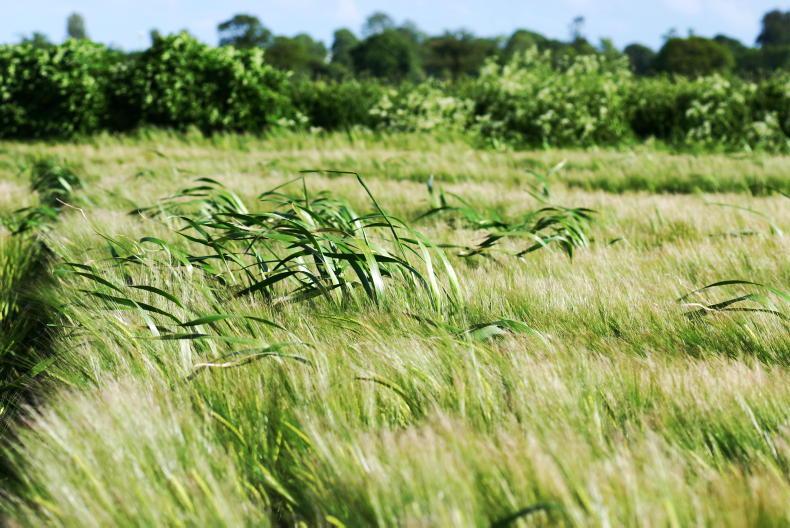

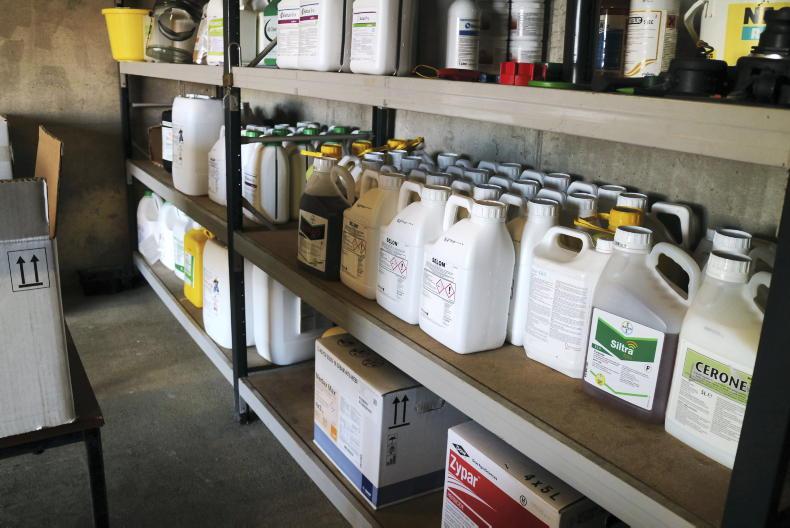
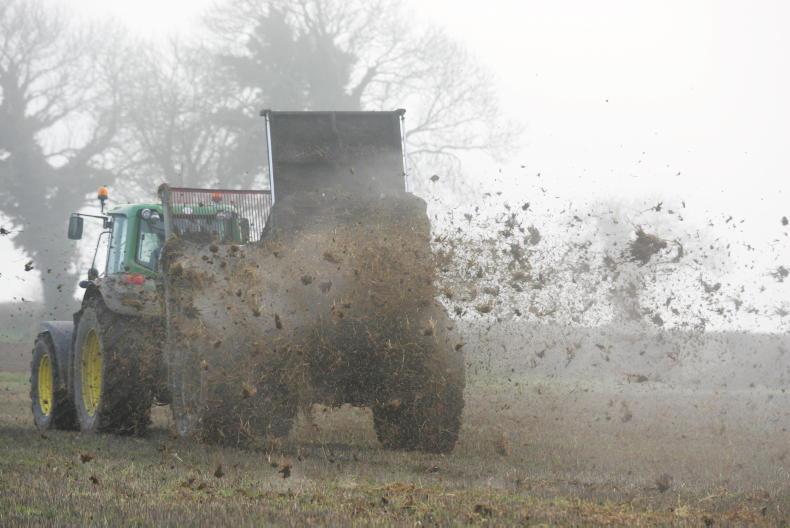
SHARING OPTIONS